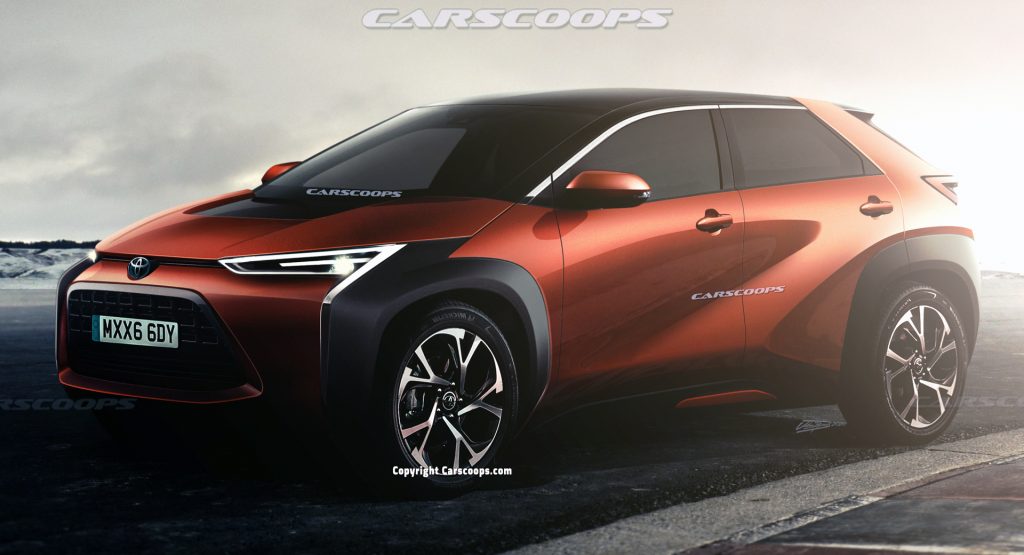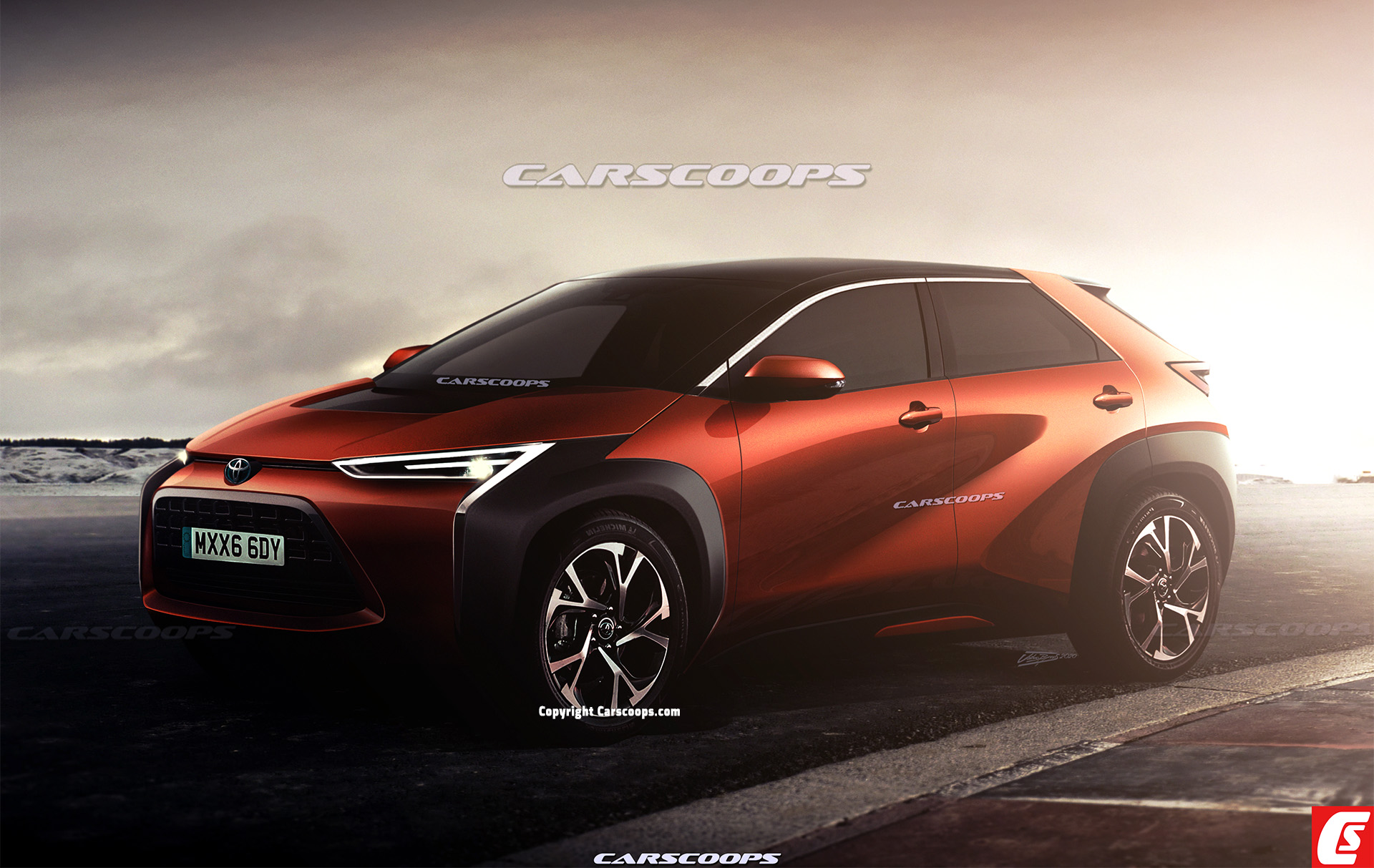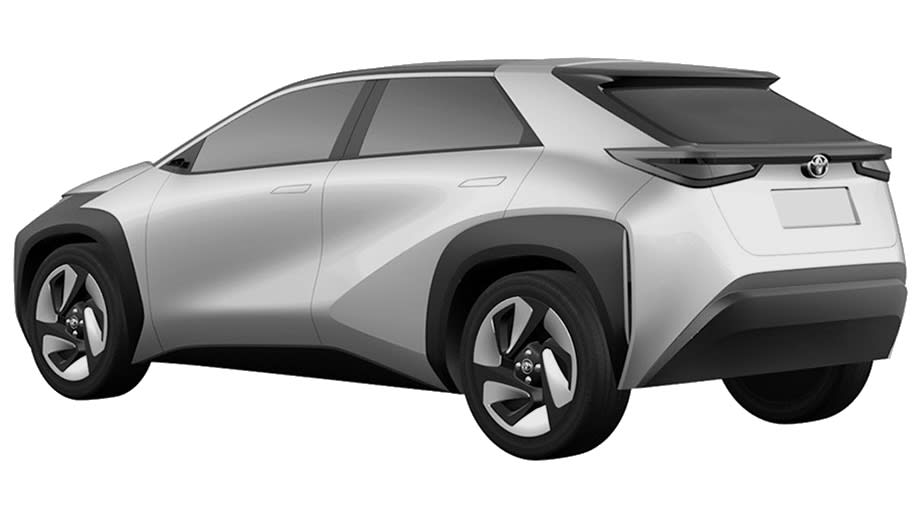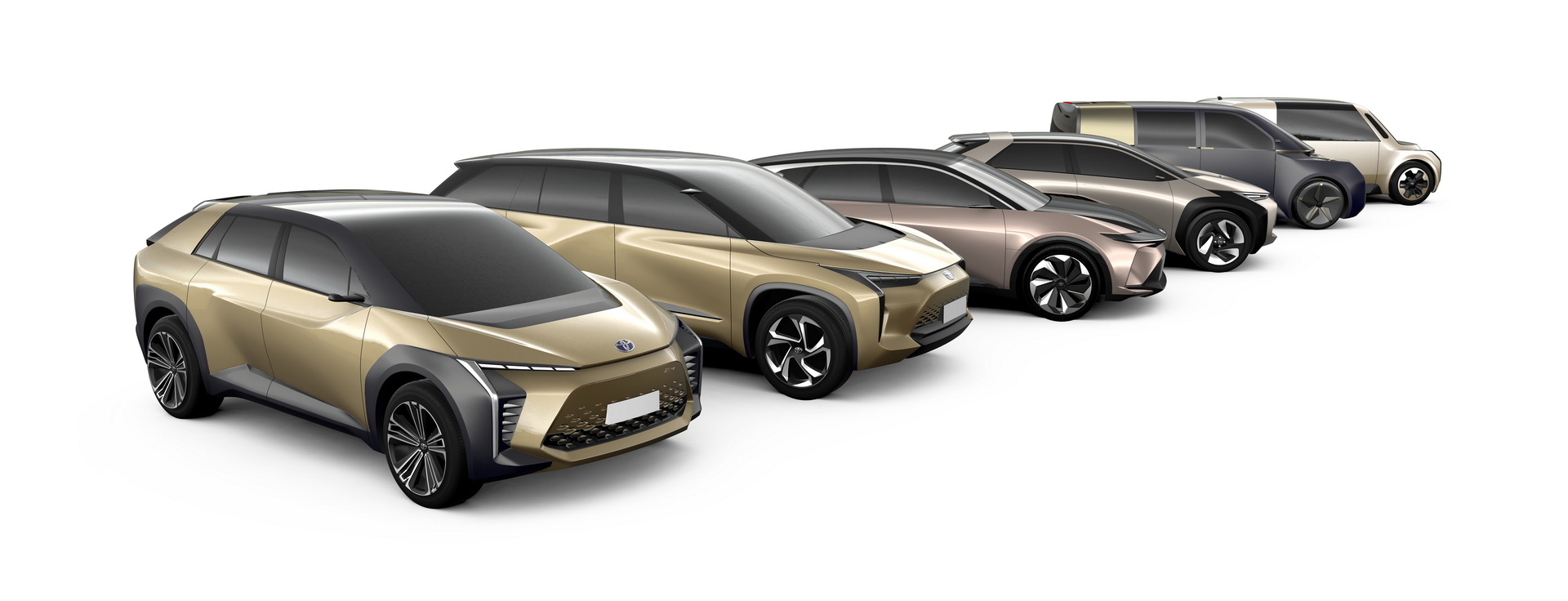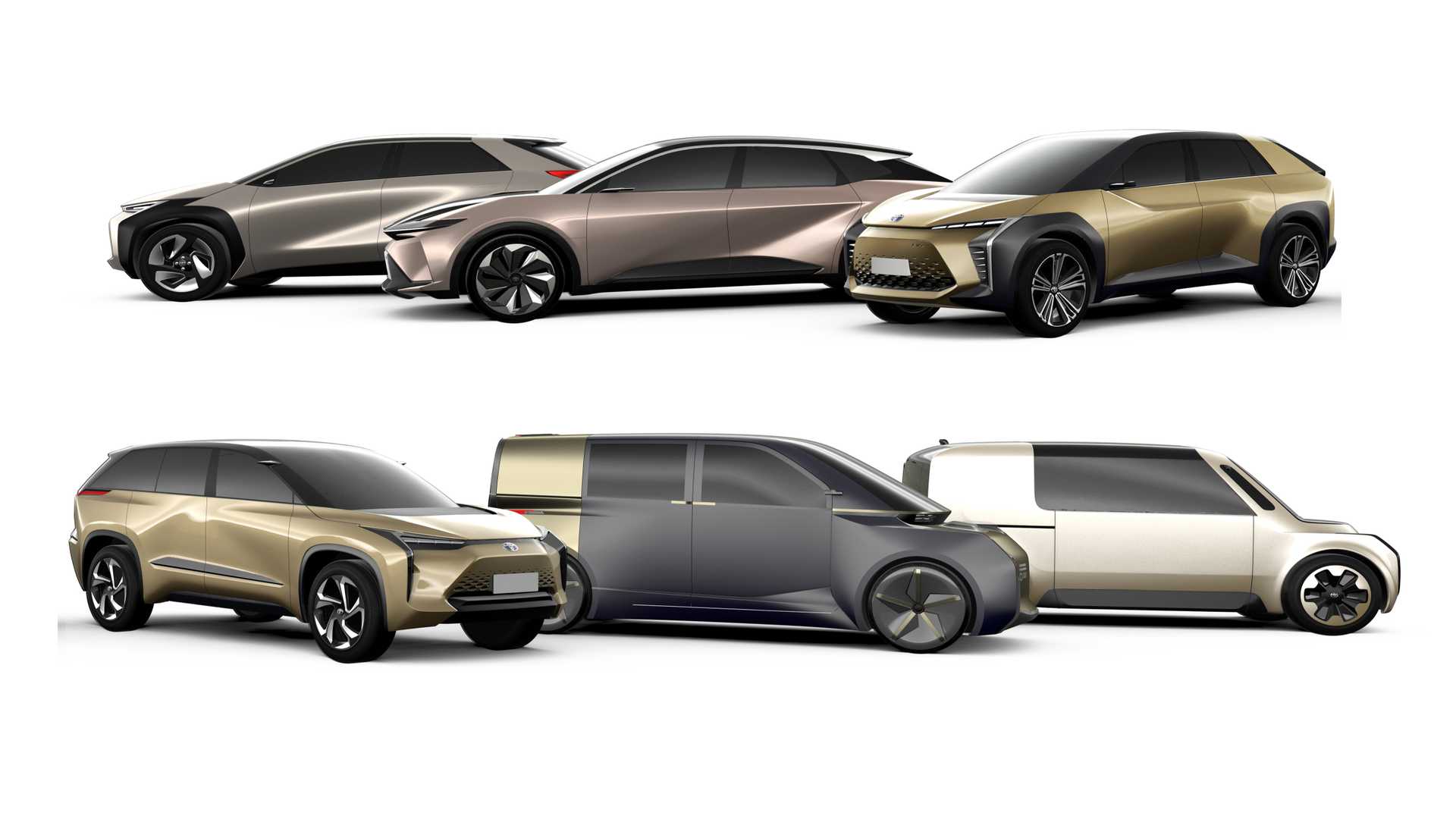When it comes to automotive patent leaks, you could arguably say China is the gift that keeps on giving. Over recent years, many manufacturers have had future product plans exposed via computer-generated imagery submitted to its national patent database. While patent submissions before a vehicle’s reveal are nothing new, the increasing level of visual detail is.
Japanese giant Toyota is the latest corporation to have its plans upstaged by leaky patent syndrome. This time, it appears its future EV lineup has been outed, revealing everything from compact SUVs to delivery vans.
Read Also: Everything We Know About Hyundai’s 45 Electric Crossover
With that intel in mind, we take an illustrated look at one of the smaller patents; an unnamed, Hyundai 45-rivalling compact crossover, which in the patents, seems to be showing a pre-production, concept version. Intrigued you say? Let’s delve further.
Sharp On The Eye
Love or hate it, Toyota is currently injecting some severe effort into vehicle design; it’s a far cry from the staid old days of the ’90s and 2000s where everything in its portfolio was bland as a buttered napkin. Nowadays, things are looking much more youthful, and this BEV crossover is no exception.
Frontal styling features a patterned grille panel, and wedge-shaped LED headlamps which morph into vertical chrome blades; it’s a unique effect, separating the contrasting black fenders from the volcanic red paint. A clamshell hood leads the eye up along the two-tone roof, and the upper door frames have eye-catching chrome inlays that exude a dose of futurism.
The side profile is equally intriguing; concave & convex surfaced doors exhibit a wave-like illusion, and a thick c-pillar wraps over the roof like a giant handle. Rear styling features full-width horizontal LED tail lamps and a large faux diffuser panel – similar to that of the latest Yaris hatch.
Under the Skin
Interior styling and packaging is mostly an unknown quantity at this stage; however, being an EV should liberate more cabin volume compared to a comparatively-sized ICE crossover.
Expect the latest in infotainment and connectivity, with immersive touchscreen displays, wireless charging, and Android Auto & Apple CarPlay. Toyota’s next iteration of Safety Sense (TSS 3.0) could also be employed, potentially offering Level 3 semi-autonomous driving in specific driving environments.
Conjecture has it the compact crossover will utilize Toyota’s modular e-TNGA platform (electric Toyota New Global Architecture). It’ll underpin a whole range of EV’s – including vehicles from Lexus and Subaru too. Although intriguingly, a recent partnership between Chinese carmaker BYD and Toyota to develop battery-electric vehicles could see a different spin on this platform’s development – if and by how much, is anyone’s guess.
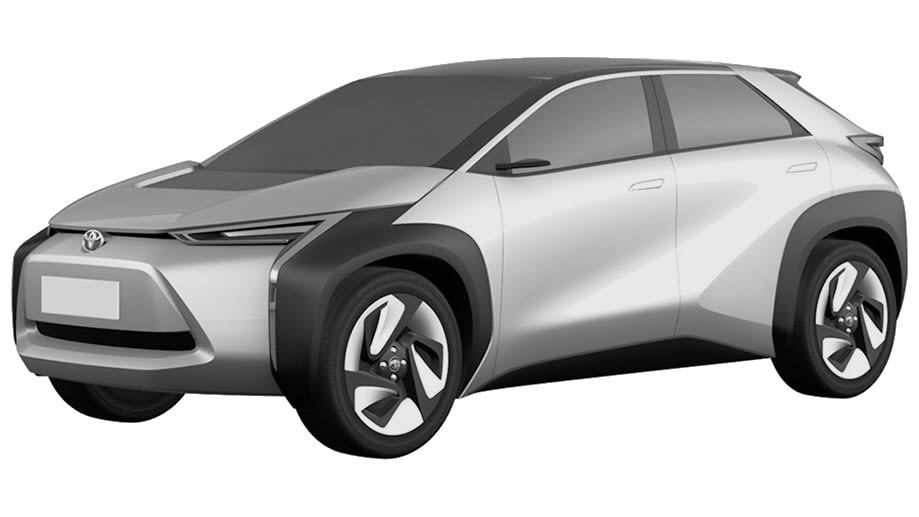
Toyota’s patents show a small crossover, likely in concept form, judging by the door-mounted cameras instead of mirrors
Potent Performance
While powertrain details are scarce, reports suggest the e-TNGA architecture can accommodate a host of drive system configurations; from front-wheel-drive, rear-wheel-drive or dual-motor all-wheel drive.
Performance-wise, expect somewhere around the 150-200 horsepower bracket, with power in entry-level variants coming from a 50 kWh battery pack. High series models may see that capacity grow to 80 kWh, allowing it to cover vast distances between charges.
An Emerging New Market
By the time Toyota official unveils its small crossover BEV sometime in 2022, we expect a few more battery-electric competitors to have shown face. These rivals encompass Volkswagen Group’s MEB-based VW ID.3, Skoda Enyaq and SEAT el-Born. Others include Hyundai’s 45, Kona electric, and Kia e-Niro.
Stay tuned for further information on Toyota’s electric vehicle program as more details come to light (or when leaked by a foreign patent office).
Share your views in the comments below.




